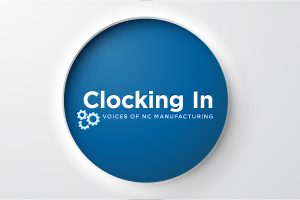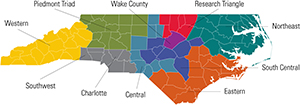There are several key components of logic models that are standard best practice. This blog will discuss these various components and provide an example of a logic model template. You may access the free logic model template here.
When developing a new program, or trying to figure out what aspects of an existing program need to be evaluated, a logic model may be helpful in showing the various components, activities and goals of the program.
A logic model is a graphical representation of your program, from the resources (inputs) and activities that will take place, to the deliverables (outputs) and goals( outcomes) that the program will produce.
Three reasons to consider developing a logic model:
- A funder (e.g. grantor) requires a logic model as part of an evaluation plan in your proposal.
- Program stakeholders are requesting details on your measurable goals and objectives, and you are looking for ways to visually display this information.
- You want to see a quick snapshot of how your program operates and what it intends to accomplish.
To further clarify the significance and components of a logic model, let’s walk through an example which will break out each component separately and finish with a complete logic model.
Example: Your internal evaluation team has been tasked with identifying issues with student persistence at a local community college. What are some examples of inputs, activities and goals which will be shown in the logic model?
- Inputs – When trying to determine your program inputs, consider the critical resources that are required to make your program successful. For example, partners, project team members, advisory groups, volunteers, facilities or equipment.
Inputs Activities Outputs Outcomes Project Team, Student Support Staff, Advisory Board Tip: Since inputs are directly related to the ‘Activities’ of your program, it is helpful to develop an initial list of inputs, then fill in your activities (see Step 2), and go back to the inputs to make sure that you didn’t miss any resources to achieve those activities.
- Activities – Many programs and projects have a plan/timeline in place that outlines the high level activity areas and tasks. When thinking about what activities to include in the logic model, reference those high-level activity areas. For example, if one of the outcomes of your program is to increase the persistence of students in an academic program, your activity column may include ‘intensive / intrusive advising,’ and not necessarily something as specific as ‘schedule advising appointments with students twice per semester.’ Scheduling meetings quarterly is a task that will be reflected in your detailed plan, and the ‘intensive / intrusive advising’ is a high level activity area that encompasses that – and is more appropriate for the activity column of a logic model.
Tip: Logic models are not meant to replace a detailed project plan, they are just a way to link your resources to your activities and then to your goals in a succinct manner.
Inputs Activities (High Level) Outputs Outcomes Project Team, Student Support Staff, Advisory Board intensive/intrusive advising - Outputs After you have consensus on the inputs and activities of a program, think about the direct measurable results of those activities, which will be your program outputs. Outputs can come in a variety of forms. Your program may be producing marketing or awareness materials, which can be simply stated in the output column. Your program may be producing graduates or completers of a degree, certificate, or workshop. The number of graduates / completers would be an example of an output.
Tip: When determining whether a result is an output or an outcome, ask yourself “Is this result completely controllable by the program staff? If it is, then it is an output. In the example, the production of marketing or awareness materials is completely controllable by the program staff, so that would be an output. However, whether a student completes a degree depends to a great extent, on the student, so since it is not completely controllable by the program staff, it is an outcome.
Inputs Activities (High Level) Outputs Outcomes Project Team, Student Support Staff, Advisory Board intensive/intrusive advising # of intensive/intrusive advising sessions - Short, Mid, and Long Term Outcomes – As expected, short-, mid-, and long-term outcomes differ by the time span in which we expect to achieve them. Typically, the short-term outcomes are more specific and/or more directly measured, and then mid- and long-term outcomes are broader. For example, when looking at learning-focused outcomes, short to mid-term outcomes can be characterized by an increase in knowledge, skills and abilities when participating in activities (short-term), then a gradual shift in behavior or performance occurs (mid-term), followed by a complete change in behavior/actions (long-term).
Tip: While outcomes are often learning-focused, sometimes an outcome might be an increase in the retention rate, graduation rate, employment rate, etc.
Inputs Activity Outputs Short-Term Mid-Term Long Term Outcomes Students, Student Support Staff, intensive / intrusive advising # of intensive/intrusive advising sessions # of completers Increase in student persistence Increase in graduation
As you work through your program implementation, you may determine that changes need to be made along the way. If this occurs, update the components of the logic model accordingly. Overall, the logic model will serve as a guide for your evaluation plan design. Stay tuned for more information on Evaluation Plan Design in our next blog. If we can help with your logic model development, consider dropping us a line.
—
Leressa Suber is the Evaluation Coordinator with NC State University Industry Expansion Solutions and the IES Evaluation Solutions Group. Leressa works with program and grant evaluations related to workforce development, community college, STEM, and the Department of Defense (DOD). Leressa has a background in human resources and adult education. She has an MS Degree in Occupational and Technical Studies from Old Dominion University and a BS in Business Education from North Carolina A&T State University.




